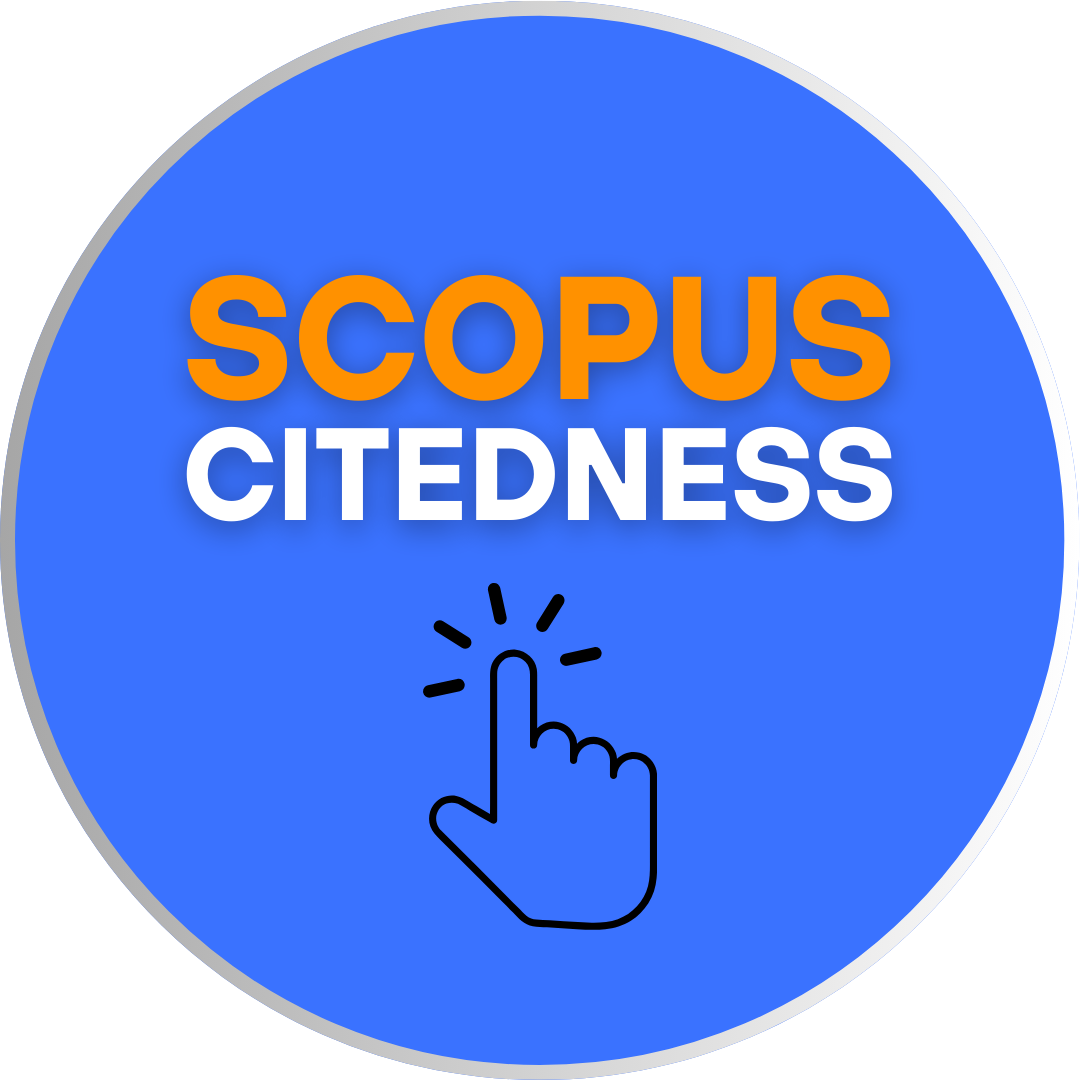Educational Video Quality on TikTok for Vocabulary Teaching
DOI:
https://doi.org/10.18592/let.v13i2.11600Keywords:
Educational Video, Teaching Vocabulary, TikTokAbstract
This research aimed to find out the quality of the educational videos and the quality of vocabulary teaching contents taught on the TikTok account. This research conducted online, on the TikTok account @jagobahasa.com. These data sources are limited to vocabulary teaching videos posted within the last three years. The researcher selected video samples randomly with the existing criteria. The criteria used to assess the quality were theories by Brame and Lopez. The study revealed that elements in the video showed a significant match against the criteria of educational video and criteria for vocabulary teaching contents. The educational videos provided cognitive load, student engagement and active learning. Meanwhile, the quality of the vocabulary teaching contents taught was nearly comprehensive, including teaching vocabulary of frequency, range, availability and expediency, learnability, and cultural factors. However, for the use of guiding questions, making videos as homework, and specific needs or interests of learners were not available.References
Alghameeti, A. A. (2022). Is TikTok an Effective Technology Tool in English Vocabulary Expansion?. English Language Teaching, 15(12), 1-14. https://doi.org/10.5539/elt.v15n12p14
Brame, C. J. (2016). Effective educational videos: Principles and guidelines for maximizing student learning from video content. CBE—Life Sciences Education, 15(4), es6. https://doi.org/10.1187/cbe.16-03-0125
Carmichael, M., Reid, A., & Karpicke, J. D. (2018). Assessing the impact of educational video on student engagement, critical thinking, and learning. A SAGE white paper.
Cole, Frank L. MSN, CEN, RN. Content Analysis: Process and Application. Clinical Nurse Specialist 2(1):p 53-57, Spring 1988.
De Koning, B. B., Tabbers, H. K., Rikers, R. M., & Paas, F. (2009). Towards a framework for attention cueing in instructional animations: Guidelines for research and design. Educational Psychology Review, 21, 113-140. https://doi.org/10.1007/s10648-009-9098-7
Guo, P. J., Kim, J., & Rubin, R. (2014, March). How video production affects student engagement: An empirical study of MOOC videos. In Proceedings of the first ACM conference on Learning@ scale conference (pp. 41-50). https://doi.org/10.1145/2556325.2566239
Honeyfield, J. (1977). Word frequency and the importance of context in vocabulary learning. RELC Journal, 8(2), 35-42. https://doi.org/10.1177/003368827700800202
Hornby, A.S. 2009. Oxford Advanced Learner’s Dictionary. Oxford University Press.
Hutchinson, T., & Waters, A. (1987). English for specific purposes. Cambridge university press.
Ibrahim M, Antonenko PD, Greenwood CM, Wheeler D (2012). Effects of seg-menting, signaling and weeding on learning from educational video. Learn Media Technol 37, 220–235. https://doi.org/10.1080/17439884.2011.585993
Lawson, T. J., Bodle, J. H., Houlette, M. A., & Haubner, R. R. (2006). Guiding questions enhance student learning from educational videos. Teaching of Psychology, 33(1), 31-33. https://doi.org/10.1207/s15328023top3301_7
López Campillo, R. M. (1995). Teaching and learning vocabulary: An introduction for English students. Ensayos: revista de la Escuela Universitaria de Formación del Profesorado de Albacete.
MacHardy, Z., & Pardos, Z. A. (2015). Evaluating the Relevance of Educational Videos Using BKT and Big Data. International Educational Data Mining Society.
Mayer RE, Moreno R (2003). Nine ways to reduce cognitive load in multime¬dia learning. Educ Psychol 38, 43–52. https://doi.org/10.1207/S15326985EP3801_6
McCarthy, M. (1990). Vocabulary. Oxford University Press.
Parjas, H., & Supraba, A. (2018). The Students’ Vocabulary Understanding of British and American English. Jurnal Studi Guru dan Pembelajaran, 1(1), 49-56. https://doi.org/10.30605/jsgp.1.1.2018.23
Pratiwi, A. E., Ufairah, N. N., & Sopiah, R. S. (2021, March). Utilizing TikTok application as media for learning English pronunciation. In International Conference on Education of Suryakancana (IConnects Proceedings). https://doi.org/10.35194/cp.v0i0.1374
Rajadell, M., & Garriga-Garzón, F. (2017). Educational videos: After the why, the how. Intangible Capital, 13(5), 902-922. http://dx.doi.org/10.3926/ic.1042
Rice, P., Beeson, P., & Blackmore-Wright, J. (2019). Evaluating the impact of a quiz question within an educational video. TechTrends, 63(5), 522-532. https://doi.org/10.1007/s11528-019-00374-6.
Sinclair, J. M., & Renouf, A. (2014). A lexical syllabus for language learning. In Vocabulary and language teaching (pp. 140-160). Routledge.
Sugiyono, P. Dr. (2008). Metode Penelitian Kuantitatif, Kualitatif dan R&D. IKAPI: CV ALFABETA.
Tajik, F. (2018). The impact of teaching English synonym and antonym pairs adjacently and non-adjacently on Iranian EFL learners' vocabulary learning and retention. Modern Journal of Language Teaching Methods (MJLTM), 8(3), 200-225. http://dx.doi.org/10.26655/mjltm.2018.3.10
Thornbury, S. (2006). How to teach vocabulary. Pearson Education India.
Thorne, S. (2000). Data analysis in qualitative research. Evidence-based nursing, 3(3), 68-70. http://dx.doi.org/10.1136/ebn.3.3.68
Wallace, Michael. (1988). Teaching Vocabulary. Heinemann Educational Books.
Yang, S., Zhao, Y., & Ma, Y. (2019, July). Analysis of the reasons and development of short video application-Taking Tik Tok as an example. In Proceedings of the 2019 9th International Conference on Information and Social Science (ICISS 2019), (pp. 12-14). DOI: 10.25236/iciss.2019.062
Yarema, I. A. (2013). Selecting Materials for Forming Lexical Competence In Professional Speaking of Future Metallurgists. Социосфера, (4-2), 110-114.
Zhang, Y., Lucas, M., & Pedro, L. (2022). The Design of Multimodal Short video: The case of English teaching videos in TikTok. In INTED2022 Proceedings (pp. 5691-5699). IATED. https://doi.org/10.21125/inted.2022.1463
Zubair, F., & Laibinis, P. (2015). Interactive videos to enhance student understanding of thermodynamic efficiency. Presentation at the American Institute of Chemical Engineers, held 11.
Downloads
Published
How to Cite
Issue
Section
License
Copyright (c) 2023 Bella Syifa Zulfia, Yokke Andini

This work is licensed under a Creative Commons Attribution 4.0 International License.
Authors who publish with this journal agree to the following terms:
- Authors retain copyright and grant the journal right of first publication with the work simultaneously licensed under a Creative Commons Attribution License that allows others to share the work with an acknowledgement of the work's authorship and initial publication in this journal.
- Authors are able to enter into separate, additional contractual arrangements for the non-exclusive distribution of the journal's published version of the work (e.g., post it to an institutional repository or publish it in a book), with an acknowledgement of its initial publication in this journal.
- Authors are permitted and encouraged to post their work online (e.g., in institutional repositories or on their website) prior to and during the submission process, as it can lead to productive exchanges, as well as earlier and greater citation of published work.
LET (LINGUISTICS, LITERATURE, AND LANGUAGE TEACHING) http://jurnal.uin-antasari.ac.id/index.php/let/index licensed under a Creative Commons Attribution 4.0 International License.
















